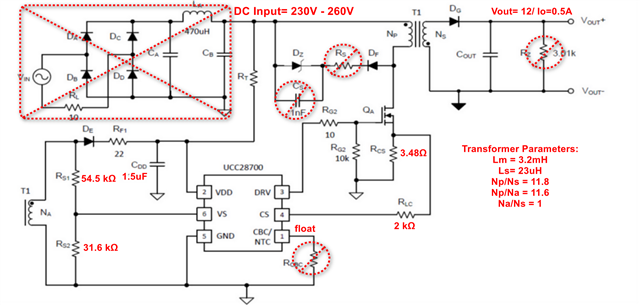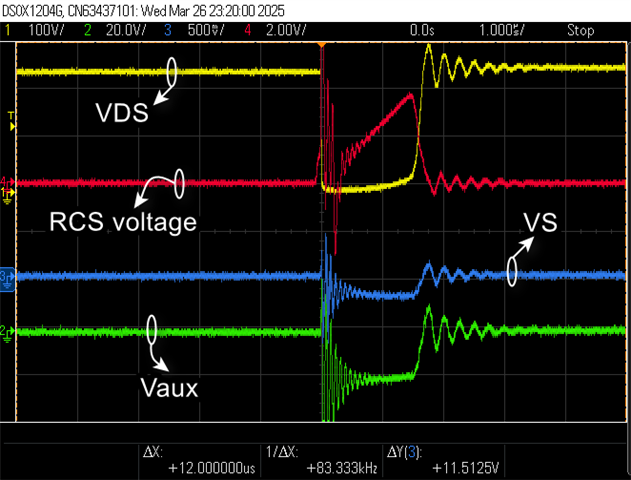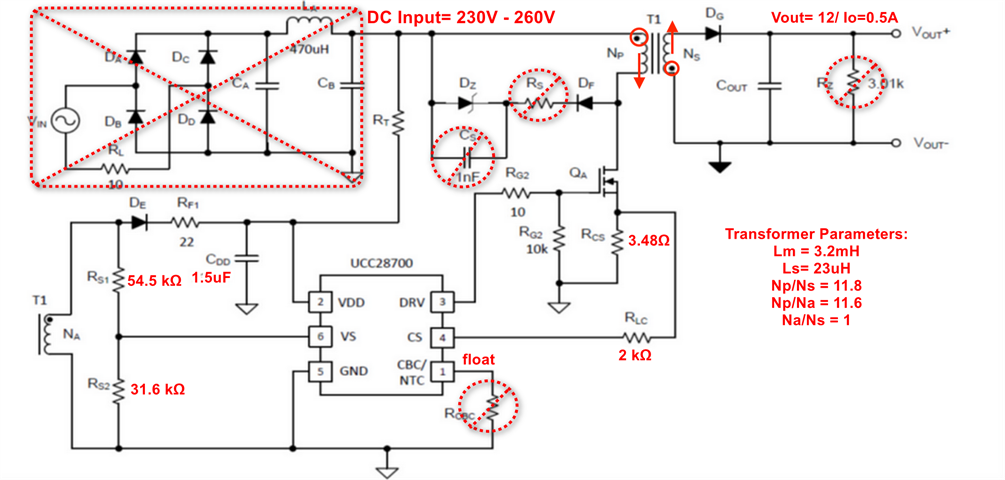Other Parts Discussed in Thread: UCC28700
Tool/software:
I have exactly the same issue with UCC28700Q1 as the one in this question "UCC28700-Q1: Need help reviewing the design including transformer", even the waveform are the same.
The part starts only giving 3 pulses and try to restart but then it goes off and then restart again. It's stuck at this stage and never startup the flyback correctly. Output voltage is 0V, the 3 pulses appear also at the secondary and auxiliary windings.
Unfortunately, the user asked about this issue didn't clarify how he solved this problem.
Can you please help?!











